FAA’s FAST awards towards the 2050 Zero Carbon Emissions Goal

The Biden-Harris Administration has set a challenging goal of ZERO CARBON EMISSIONS by 2050. [ Aviation Climate Action Plan ] The FAA has established an aggressive program to reach that target—
- Development of new, more efficient aircraft and engine technologies
- Improvements in aircraft operations throughout the National Airspace System
- Production and use of Sustainable Aviation Fuels (SAF)
- Electrification and, potentially hydrogen, as solutions for short-haul aviation
- Advancements in airport operations across the United States
- International initiatives such as the airplane CO2 standard and the Carbon Offsetting and Reduction Scheme for International Aviation (CORSIA)
- Support for research into climate science
The research aspect of that list is entitled Fueling Aviation Sustainable Transition (FAST). Thisdiscretionary grant program has made investments to accelerate production and use, among other things, of sustainable aviation fuels (SAF) and the development of low-emission aviation technologies to support the U.S. aviation climate. The breadth of their reach is impressive:
- 7 SAF Tier 1 projects. These projects are conducting SAF supply chain studies to identify infrastructure needs.
- 15 SAF Tier 2 projects. These projects are building infrastructure for SAF production, transportation, blending, and storage.
- 13 Low-Emission Technology Category 1 projects. These projects are developing low-emission aviation technologies.
- 1 Low-Emission Technology Category 2 project. This project is developing test capabilities to advance low-emission aviation technologies.
FAST grant awardees are an array of established and startup fuel producers, fuel logistics and supply chain companies, state and local governments, airport authorities, universities, as well as established and startup engine, aircraft, and component manufacturers. These awardees will carry out FAST projects in 23 states across the country. The interactive map shows how these grant funds are being invested across the United States.
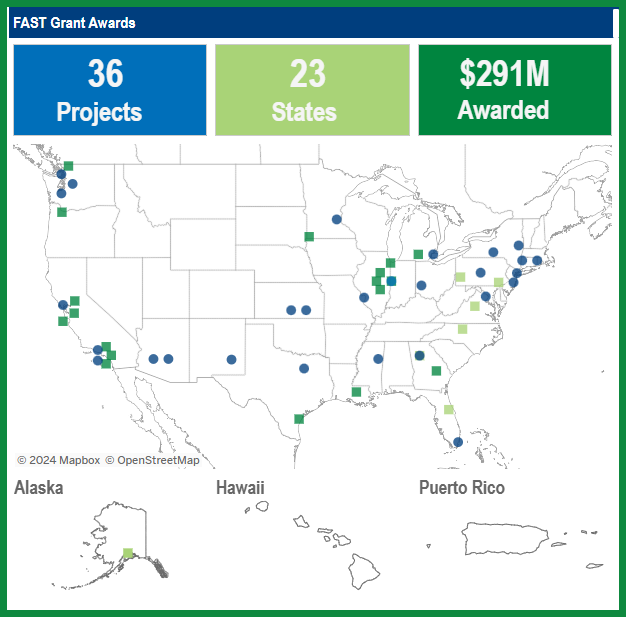
Below are two articles about FAA FAST investments—one which will develop of a first-of-its-kind control system called the Hybrid Propulsion Automated Control System (HPACS); the second will develop a High Energy, ENERGY-DENSE Battery Project. Those areas of potential environmental gains are most promising.
Interesting detail—Heart Aerospace is a Swedish company, but it is moving its research center for this project to Los Angeles for the city’s tech talent.
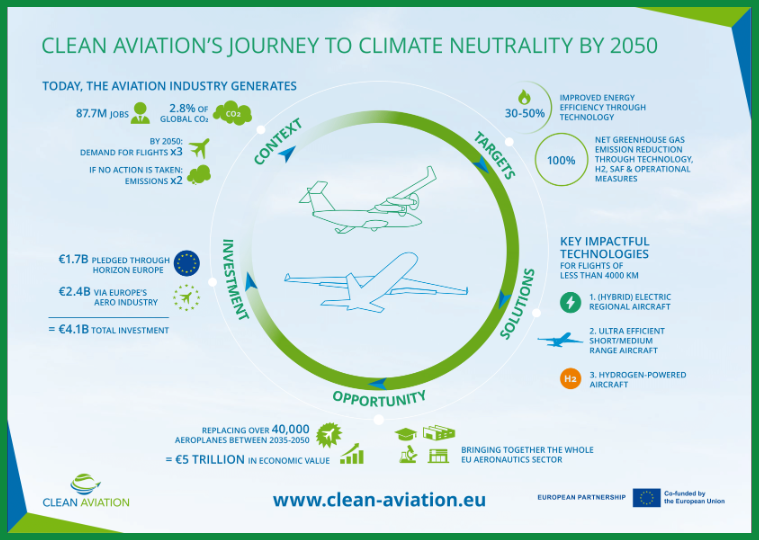

$4.1 million FAA grant for Heart Aerospace
Heart Aerospace’s $4.1 million FAA-funded grant will further the development of the ES-30’s propulsion system in the US.
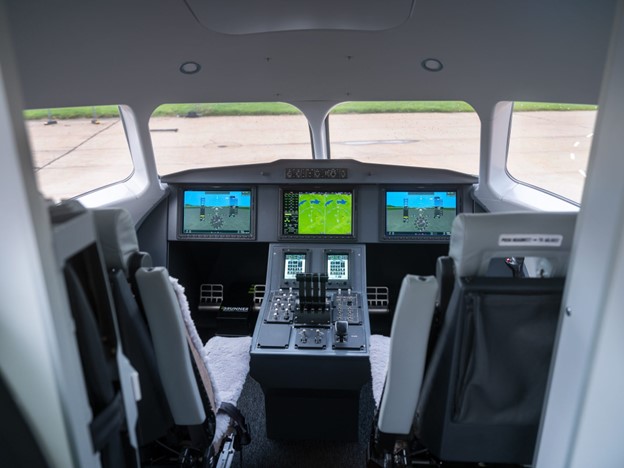
Swedish hybrid-electric aircraft developer Heart Aerospace is to receive a $4.1 million Federal Aviation Administration (FAA) grant to develop “a management system for its innovative hybrid propulsion system”.

The upcoming funding – delivered as part of the FAA’s Fueling Aviation’s Sustainable Transition (FAST) programme – will enable the development of a first-of-its-kind control system called the Hybrid Propulsion Automated Control System (HPACS). This aircraft-level power management system will “automate the hybrid power sources to ensure safe operations and minimise fuel burn, emissions, and noise while also being transparent to the crew,” explained Heart.

The systems will be fitted to Heart’s ES-30 30-seat hybrid-electric regional aircraft, which is intended to enter service in 2028 and has secured around 250 orders to date. Work covered by the grant will be undertaken at Heart’s new Los Angeles R&D hub, opened in May 2024, which has superseded heart’s previous Gothenburg facility.
Earlier this year, Heart Aerospace CEO and co-founder Anders Forslund described Los Angeles as “one of the top hotspots for talent,” telling Aerospace Global News that there is “a such a strong draw in the US market for what [Heart are] doing”.

Heart closed its Series B funding round in February this year, raising a total of $107 million to augment its previous $38 million.
The FAA Grant Program, made possible by the US Inflation Reduction Act of 2022, is aimed at accelerating the development and adoption of sustainable aviation technologies in the US. Over $46.5 million worth of grants has thus far been allocated to new aviation technologies; something Heart describes as “a vital first step in ensuring that both technology and SAF are scaled in the US”.

Wright awarded $3.3M from FAA for ultra-high-energy battery project
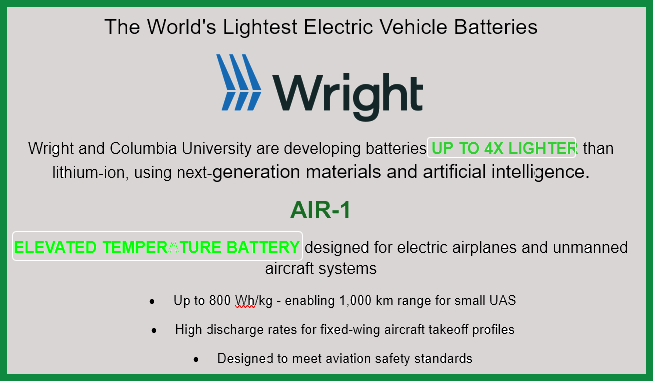
Wright Electric was awarded $3,342,094 for its new ULTRA-HIGH-ENERGY BATTERY PROJECT To research & develop a new class of batteries for zero-emission electric passenger aircraft. The funding was awarded through the Federal Aviation Administration (FAA)’s Fueling Aviation’s Sustainable Transition (FAST) grant program, funded via the Inflation Reduction Act.
Wright is developing electric aircraft to make all regional, single-aisle flights zero emissions. Its Ultra High Energy Battery Project will BOOST their ongoing research into NEW, HIGHLY ENERGY-DENSE BATTERIES.
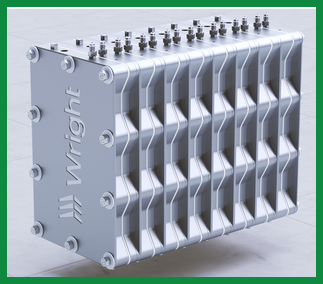
The goal is to produce batteries that will hold more energy per pound of weight than the best electric car batteries. Wright is focusing on large passenger aircraft because the 100+ passenger aircraft market accounts for more than 90% of the carbon emissions of the aerospace industry.
Wright Electric is collaborating with NASA, THE US DEPARTMENT OF ENERGY, AND THE US DEPARTMENT OF DEFENSE to build batteries that are compatible with these aircraft.

The FAA’s Fueling Aviation’s Sustainable Transition (FAST) grant program is providing $291 million in federal grant funding to create infrastructure projects related to producing sustainable aviation fuels and developing new aviation technologies to improve fuel efficiency and reduce emissions. THE PROJECTS WILL HELP THE US ACHIEVE ITS AVIATION CLIMATE GOAL OF ACHIEVING NET ZERO GREENHOUSE GAS EMISSIONS BY 2050.
Posted on 20 August 2024 in Aviation & Aerospace, Batteries, Electric (Battery), Market Background | Permalink
